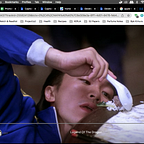Distractions and Self Control in Art Experience…in a Concert.
(This short piece was written by yours truly, on 24 February 2020, for The Changing Social and Economic Position of the Arts in Society (CC4121) course at Erasmus University Rotterdam, with a little bit of modification. The title was taken from Hans Abbing’s The Changing Social Economy of Art book, chapter 3, subtext title number 30.)
Ever since people were exposed to smartphones, recording or taking pictures when shown to art has become a ritual to most people. Especially if you are watching a concert, art lovers might have some distinct ways to keep mementoes of their art experiences. This raises a lot of pros and cons since not many people agree to do such things. Relating such a topic to this subject, once I saw the subtext title of number 30 in Abbing’s book, I felt instantly guilty as I might have become the audience that does not have self-control every time I am confronted with art. I might have become one of those people who distract other people's art experience, even the artists themselves. I often record or take pictures of musicians during concerts and then upload them to social media. Moreover, I also instantly reminded of an image that has become viral in Indonesia, depicted below.
This “offending” phenomenon regarding the mixed reaction to documenting is quite intense in the pop scene, or in this case, popular art rather than in the serious art scene. However, the pros and cons of this help if applied to situations and conditions suitable to the artist's wishes, particularly, musicians that held concerts.
I begin to understand the two sides of coins in this matter. As a unique art experience, music concerts can be intuitive or controlled depending on genres or artists. From the cons side, many musicians respect stillness or tend to be to the intuitive side, for instance, in classical music scenes, as emphasized back then by Richard Wagner (Abbing, 2019, pg. 76). Until the present day, many musicians such as Childish Gambino, Guns ‘N Roses, Alicia Keys, and The Lumineers also accentuate stillness by requiring the audiences to lock their phones on a special pouch during the show (Stilwell & Cox, 2017). It is highly understandable that the artists and the art-lovers, in this case, wanted to have an intense art experience, and instead, they want others to do the same. The serious audiences want to share the collective effervescence feelings, focusing on the experience together (Abbing, 2019, pg. 76). Thus, they will get very disturbed when their surroundings do not have the same intention.
However, on the pros side, it is highly expected that popular music audiences were expected to perceive and cover the art differently, compared to those usually acknowledging serious art. For example, the rising popularity of Korean waves of cultural products such as its music, TV dramas, and movies, has an immense effect on the internet. Once fans got swept away by the “waves,” the fans begin to produce fancam, videos focused on a specific idol during concerts and performances (Anderson, 2019). Fancam is said as a free advertising tool. The fans are willingly publishing the content online, and it is beneficial for idols as it increases their publicity, which the idols usually give a go (Cardiff University, 2018). This means that the performers tend to perform controlled art experiences, as the consumer consciously constructs their recorded videos to have created their own memento or publicity tool. In a way, those fans were channelling expressive authenticity towards the performance (Abbing, 2019). They were genuinely loyal as a fan, scanning the performance by recording their idols so they can play it back to remember or even edit it to their fancam.
As technology advances, the way people celebrate art experiences tend to go debatable. Looking at the two sides of the art experience, I will try to learn my lesson by thinking twice every time I want to record or take photographs within the experiences, whether it is intuitive…or controlled experiences.
Source:
Abbing, H. (2019). The Changing Social Economy of Art. London: Palgrave.
Anderson, S. (2019, July 31). Reply sections on Twitter are filled with K-pop videos. Here’s why. Retrieved February 23, 2020, from https://mashable.com/article/kpop-twitter-fancam-reply-trend/?europe=true
Cardiff University. (2018, November 15). K-pop, fansites and fancams: the effect of new media technology on fan practices — C1645245. Retrieved February 23, 2020, from https://criticalreflections377162563.wordpress.com/2018/11/15/k-pop-fansites-and-fancams-the-effect-of-new-media-technology-on-fan-practices/
Stilwell, R., & Cox, M. (2017, March 17). Phone Recordings of Concerts Are More Than Just Annoying, They’re Potentially Illegal: Guest Post. Retrieved February 23, 2020, from https://www.billboard.com/articles/business/7724330/phone-recordings-concerts-illegal-federal-bootlegging-laws
